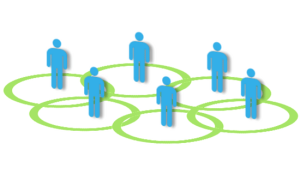Using Lean to Achieve the 7 Habits: No. 4 “Think Win-Win”
Originally published on May 5, 2015
Updated on November 14th, 2024
Think Win-Win
Covey’s Seven Habits are represented by three imperatives: Independence, Interdependence and Continuous Improvement, and the seven habits fall within these categories. Over the next several weeks, we’ll discuss the habits that fall under the Interdependence imperative.
Interdependence demonstrates the ability to cooperatively function in a proactive manner with clients, team members, and individuals associated with your personal life. This component is essential to advancing in and cultivating relationships with others. By thinking “win-win”, we can start on a path towards interdependence by understanding a “win” for everyone is a better long-term resolution than a “win” for only one individual. Getting people to work as a team requires treating them as a team. Value and respect of genuine feelings go a long way to achieve rewarding solutions or agreements within your team and in your relationship.
Similar to Covey’s “think win-win” for all, Lean practitioners focus on making improvements across the entire value stream instead of focusing on the silos (insert link to silo blog). Leaders “win” when they move away from functional silos of disciplinary “experts” and move toward an organization built around the product or service it provides.

Breaking Down the Silos
One of the biggest challenges we face when working with other companies who strive to become Lean is breaking down the silos and focusing on the value stream. We have seen this occur across the spectrum, regardless of the company’s structure or industry, including the manufacturing industry, the professional services industry, as well as a public university department. On the surface, organizational leaders say they are team players, putting the organization’s gains before their own. As we dig deeper, though, we often find that these same leaders have personal preferences for serving their customers, whether it be prioritizing their projects above others or repeatedly fighting to schedule super-star staffing on their team. In general, the cross-functional team of individuals assigned to a process improvement project is bought-in to the value stream approach. Why? Because stakeholders from all levels across the value stream are sitting together in a room vetting out the issues and gaining a mutual understanding as to why making improvements across the value stream is a “win-win”.
Obtain Buy-In From Leaders
Failures occur when the organizational leaders who were not part of the process improvement project team do not see this vision. It is therefore important for the team to obtain buy-in from the leaders before rolling out the improved process to the rest of the company. The leaders need to understand how the team analyzed silo management, what are the symptoms of silo management, specific examples and metrics under the current silo methods, and how they, both individually and company-wide, will benefit from following the value stream. We are not saying that the leaders are only looking out for themselves, but rather, it is inherent to continue the silo way of thinking until you can have faith that following the value stream will still be a “win” for you.
The shift from “thinking inside the silo” to “thinking outside the box” can be a tough hurdle to overcome, but once that shift is made, significant capacity will be gained to not only provide the bare minimum to customers, but to find innovative ways to add additional value to customers. By focusing on the value stream, the organization serves the customers and the leaders serve the organization. Teamwork and idea sharing are key components to Lean enterprises because they take the task assigned one step further by improving it. Collaboration accelerates leaders beyond production to teaching and coaching future leaders, which subsequently results in continued growth in customer satisfaction.
By applying lean methodologies to achieve the fourth habit, you and your company will inevitably become more productive and proactive. In our next blog post, we’ll discuss Covey’s fifth habit, which is also represented by the Interdependence imperative.
About the Authors
Mike Sibley and Katie Davis are passionate about creating thorough and sustainable systems to help organizations become Lean Enterprises. In addition to writing and speaking on Lean Six Sigma, Mike and Katie work directly with an organization’s members to evaluate an existing process and identify solutions that eliminate waste, as well as build efficiency and quality into the process. Mike and Katie have applied these approaches for manufacturing, construction, professional services, and governmental entities.
Other Posts You Might Like
